UPDATE: See the bottom of this post for new, higher definition, full-colour fractals!
While messing around with factorials, I stumbled across some unexpected and elegant fractal images.
As you probably know, the factorial function n! is calculated by multiplying all the positive integers from 1 to n:
n! = 1 × 2 × 3 × … × (n − 1) × n
The function grows very quickly:
1! = 1
2! = 2
3! = 6
4! = 24
5! = 120
…
10! = 3628800
…
20! = 2432902008176640000
…
50! = 30414093201713378043612608166064768844377641568960512000000000000
Obviously, applying the factorial function more than once* just makes the sequence grow even quicker:
1!! = 1
2!! = 2
3!! = 720
4!! = 620448401733239439360000
5!! = 6689502913449127057588118054090372586752746333138029810295671352301633557244962989366874165271984981308157637893214090552534408589408121859898481114389650005964960521256960000000000000000000000000000
…
10!! = Something with 22228104 digits
…
20!! = Something whose number of digits has 20 digits
…
50!! = Something ludicrously enormous
Clearly, unless we start with 1 or 2 (which will stubbornly stay the same no matter how many exclamation marks we stick to them), taking repeated factorials of a positive integer is not likely to achieve anything other than giving us (and our calculator) an almighty headache.
However, factorials are not limited to the positive integers. They can be extended to all real and complex numbers using something called the Gamma function. For example, it turns out that:
1.5! ≈ 1.329
(−1.5)! ≈ −3.545
i! ≈ 0.498 − 0.155i
OK, we still cannot take the factorial of a negative integer (we get “complex infinity”), but we have definitely got considerably more scope than we had when we were stuck with the naturals. Most interestingly, many of these new numbers do not become ridiculously large (or do nothing) as you take repeated factorials:
(1 − i)! ≈ 0.653 − 0.343i
(1 − i)!! ≈ 0.857 − 0.054i
(1 − i)!!! ≈ 0.947 − 0.017i
(1 − i)!!!! ≈ 0.978 − 0.006i
(1 − i)!!!!! ≈ 0.991 − 0.003i
…
In this complex example, the imaginary part of our answers seems to be withering away and it looks like we are converging towards 1.
In fact, as far as I can tell, when taking repeated factorials, barring some extremely rare cases (solutions of z! = z) every complex number EITHER tends to 1 (like 1 − i, above) OR grows without limit (like all the positive integers greater than 2).
Let’s look at which complex numbers grow (diverge) under repeated factorialisation and which ones head for 1 (converge).** One way of visualising these two sets is to colour the complex plane, using one colour (say, white) for points that diverge and another colour (say, blue) for those that converge.*** If we wanted to be technical about it, we could say that the blue points represent the set of all z ∈ ℂ, such that:
Anyway, using this procedure, some beautiful fractal patterns (patterns that are reproduced at smaller and smaller scales) start to emerge.**** For example, here is a section of our coloured-in complex plane around the negative real axis (CLICK ON IMAGES TO ENLARGE), exhibiting a fragile looking cruciform pattern:
And here is a larger section around the positive real line:
This vertical wall of self-similar warty protuberances seems to curve off to infinity above and below, separating the blue region to the left (where most points converge), from the white region on the right (where most points diverge). However, those blue filaments that can be seen heading out of the plot and deeper into the white region, may well also be making their way to infinity (in the positive real direction).
Smaller copies of the cruciform shape from the first plot can be seen swimming off between the protuberances. Vice versa, if you go back to the first image, you can just make out some of these protuberances reproduced on smaller scales in parts of the cruciform.
Here is a close up of the central protuberance in the second plot, in which you can see the distorted fractal structure in more detail.
I was not aware of these fractals, though I assume that they must have been observed before. A rather nice thing to stumble across, nonetheless!
UPDATE: Here are some more colourful, higher definition images of these fractals. The convergent region is coloured from dark red (rapid convergence to 1) to yellow (slow convergence). The divergent region is coloured from dark blue (rapid divergence to infinity) to pale green (slow divergence).
Click on the images for full size versions, then click again to zoom to full size:
This first image shows more-or-less the widest possible scale that I could manage, for complex numbers with real and imaginary parts lying between −170 and +170. Numbers with imaginary parts any larger than that are too large for even an initial application of the factorial function in Python, so it is impossible to check whether they converge or not:
Let’s zoom in closer. Note the line of bright dots at unit intervals on the negative real (horizontal) line, behind the tail of the ‘cruciform’ shape. We will come back to these dots in a moment:
Here’s a still closer view:
And here’s a close-up of the central protuberance. Note that each of the little ‘swimmers’ emerging from the ‘coves’ between the sub-protuberances has its own set of trailing dots, like those behind the larger ‘cruciform’.
Here is the large ‘cruciform’ shape itself:
Now, back to those trailing dots that I mentioned earlier. This is what we see if we zoom in on the first of them (around -5 on the imaginary axis):
And this is the next one. Note that it is much smaller than the previous one (see the horizontal scale), but is otherwise a near mirror-image.
Zooming in to the island in the centre of the first of these “trailing dots”, you get a clearer view of the filament structure that runs through the blue regions:
The colouring is based on how many iterations were required before a number either got sufficiently close to 1 (the red/yellow regions) or became too large for Python to compute and was therefore inferred to diverge to infinity (the blue/green regions). This was then corrected by the final measurable size of the value when the convergence/divergence condition was triggered and some additional smoothing to produce continuous colours.
For each plot, the full range of the colour scheme is used, so the colours are not absolutely comparable between the images. This explains why the largest scale widest zoom image is mostly very dark.
Here are a couple of images with alternative colour schemes, just for fun:
A CAUTIONARY REMARK
I should say that, while I can be quite sure that values in the red region converge to 1, I cannot be at all sure that the dark blue region is genuinely divergent (with the exception of the positive real line). Perhaps after applying a number of factorials to the complex numbers in this region, they would actually crash back to 1, having passed through some unimaginably enormous values that the computer was unable to cope with. This is perhaps not all that unlikely, because those ‘red’ values in the figure that lie far from the real line do essentially behave in exactly this way.
Still, you should never let a pesky integer overflow get in the way of a pretty picture, right…?
* I see from Wolfram that using multiple factorial symbols (e.g. 9!!!!), technically denotes something called a multifactorial, rather that simply indicating multiple applications of the factorial function, as I intend. However, on the grounds that the correct notation (((9!)!)!)! is rather ugly, I am choosing to ignore this issue.
** I am pretty sure that we do not need to worry about the rare special cases, like z = 2, which converge to something other than 1. As far as I can tell, these are just the solutions of z! = z, which I believe to be sparse in the complex plane. In other words, although there are (I think) an infinite number of them, they do not take up any space, so we could not really colour them even if we wanted to.
*** This is the same principle that is used in visualising Julia Sets of rational complex functions.
**** The images were created in Python, using SciPy and Matplotlib.
Thomas Oléron Evans, 2015

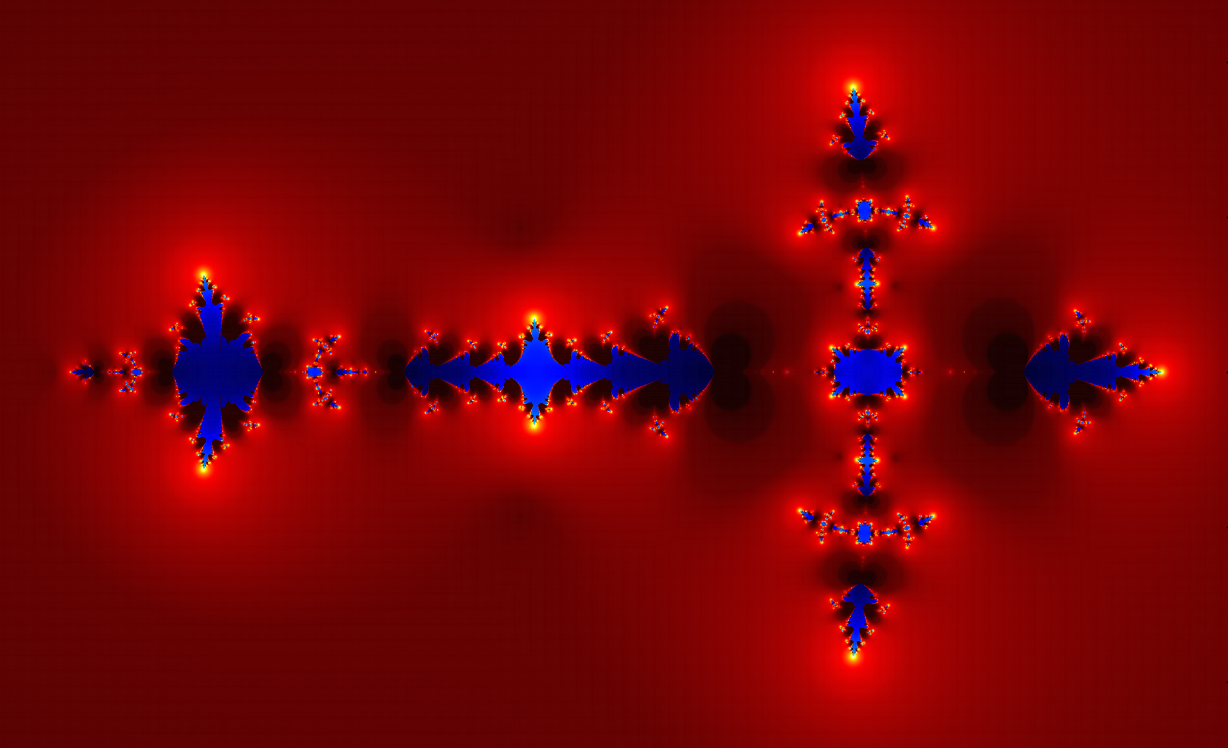
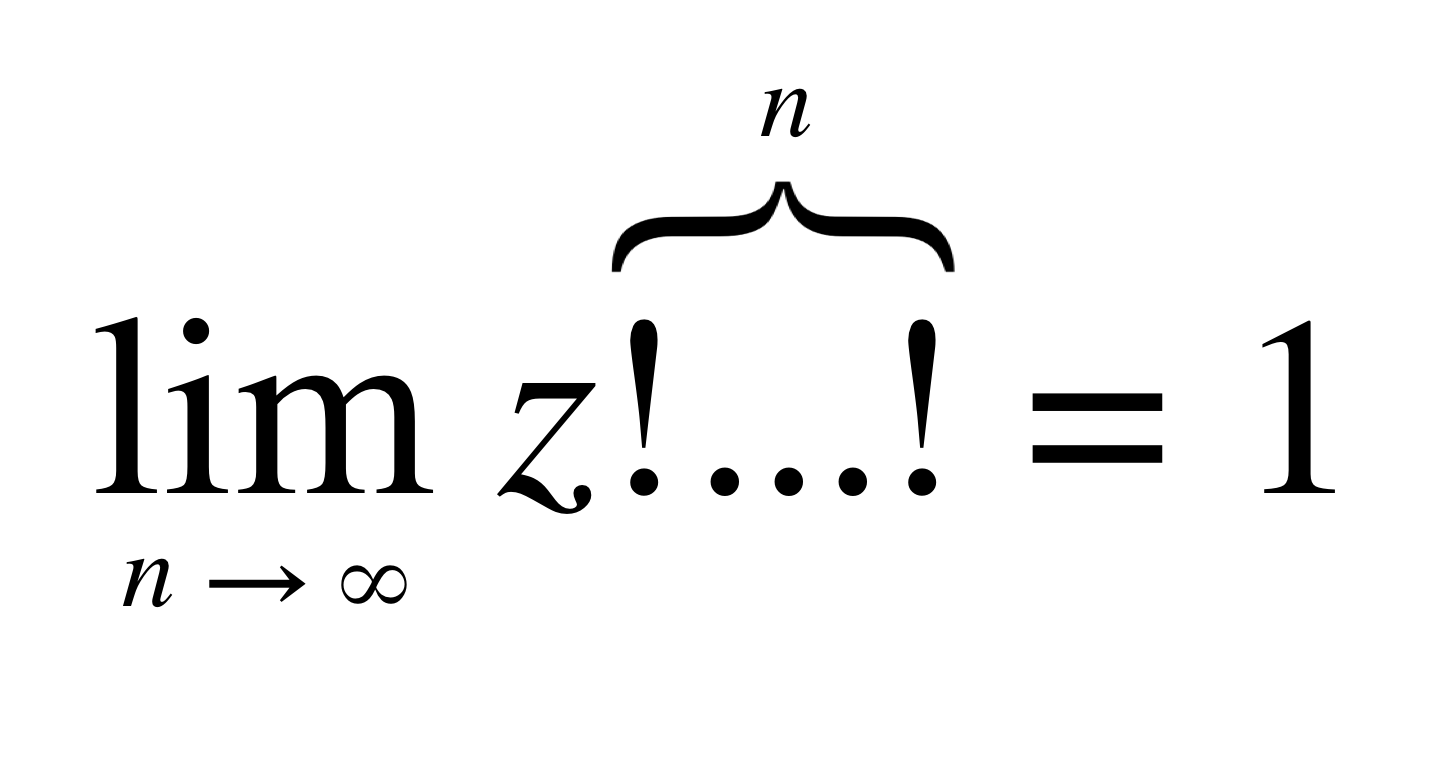
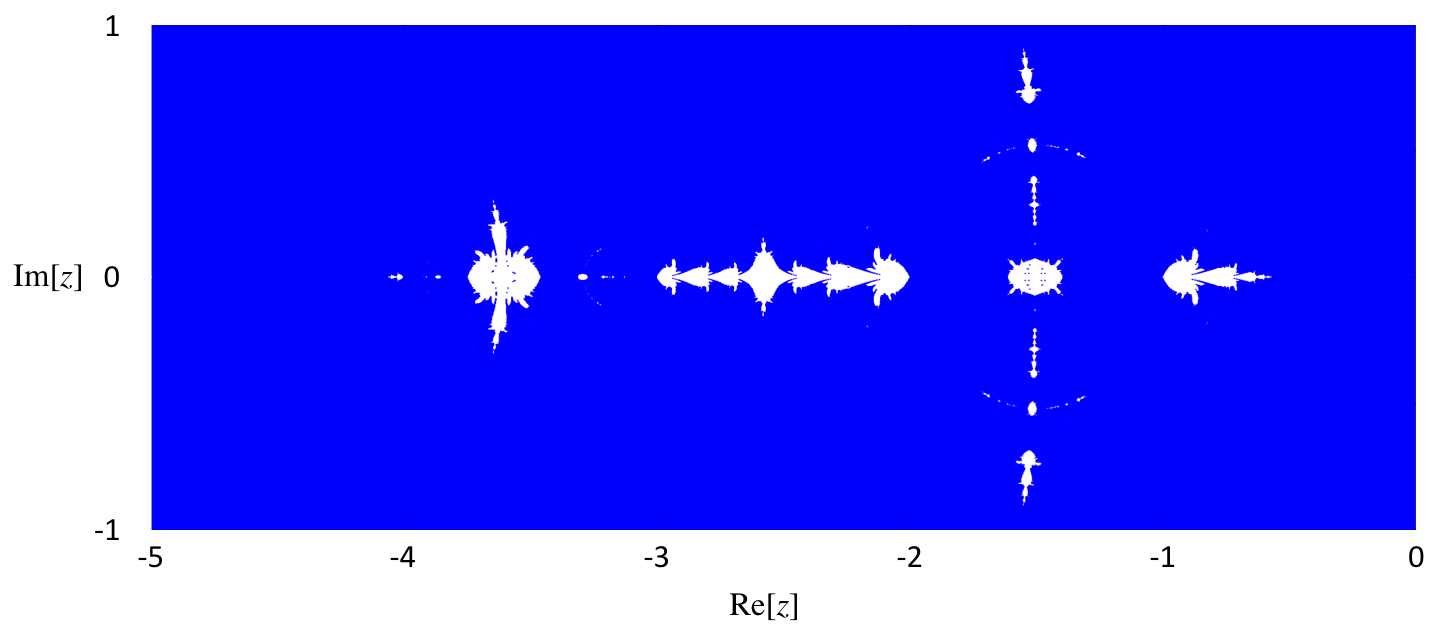
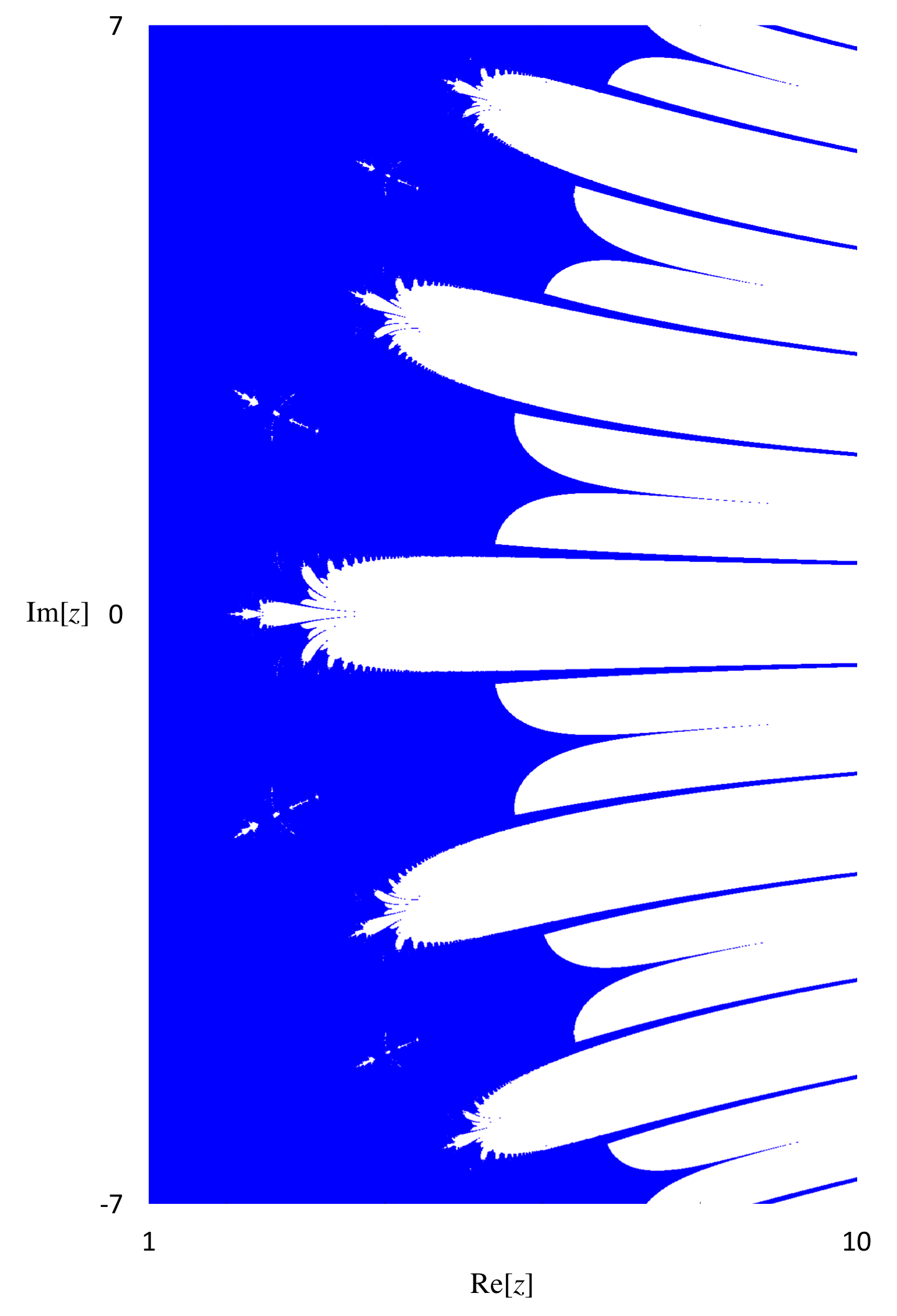
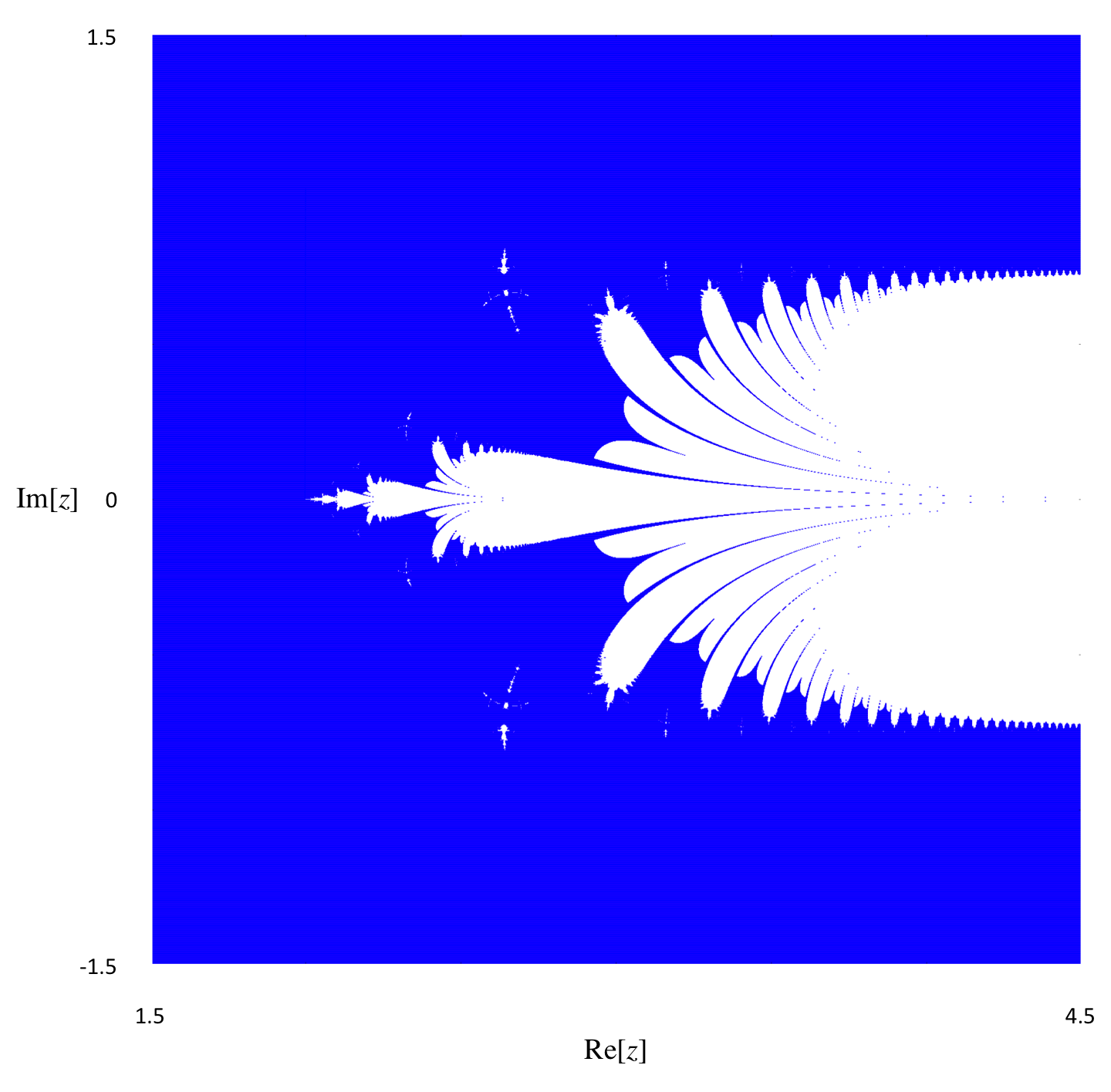
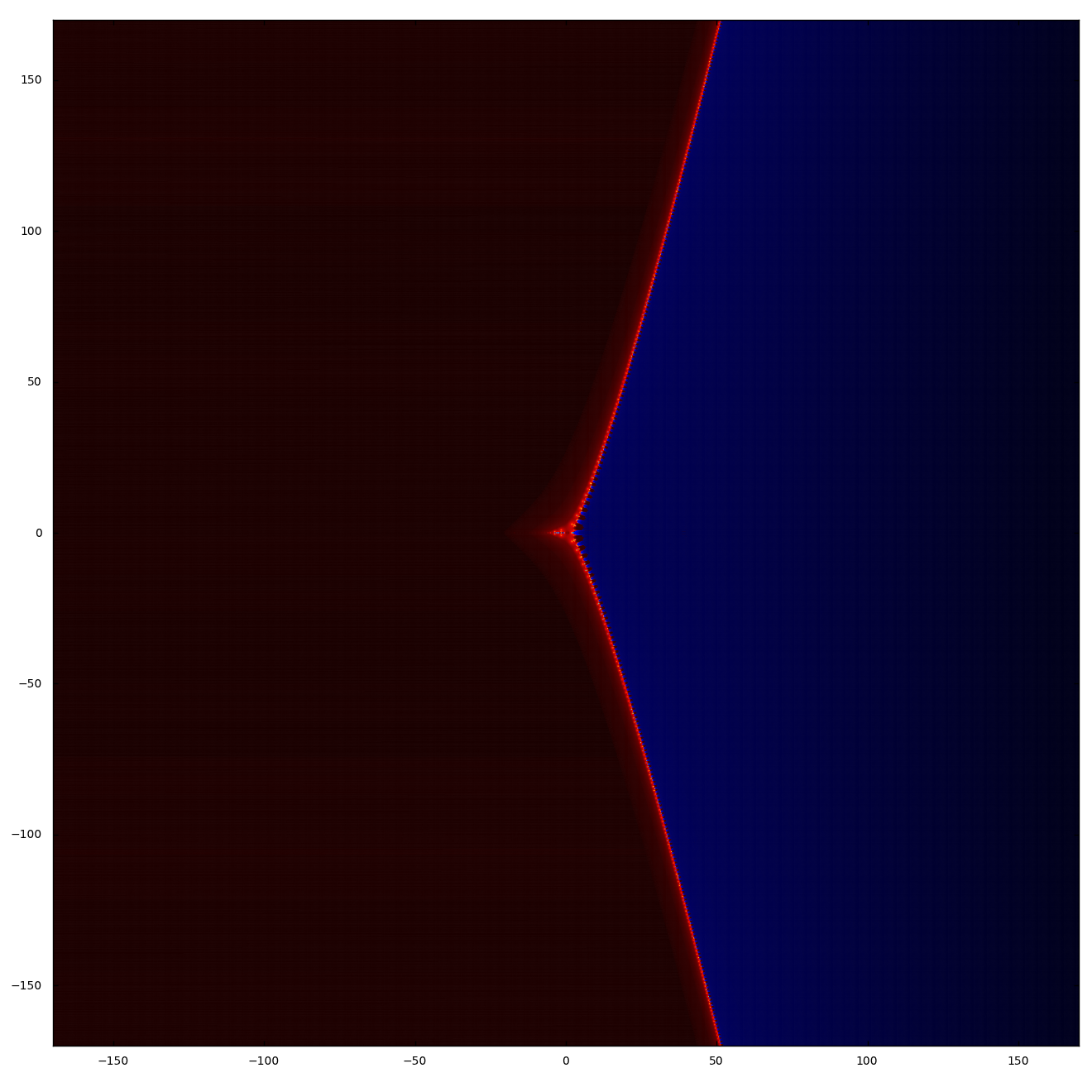
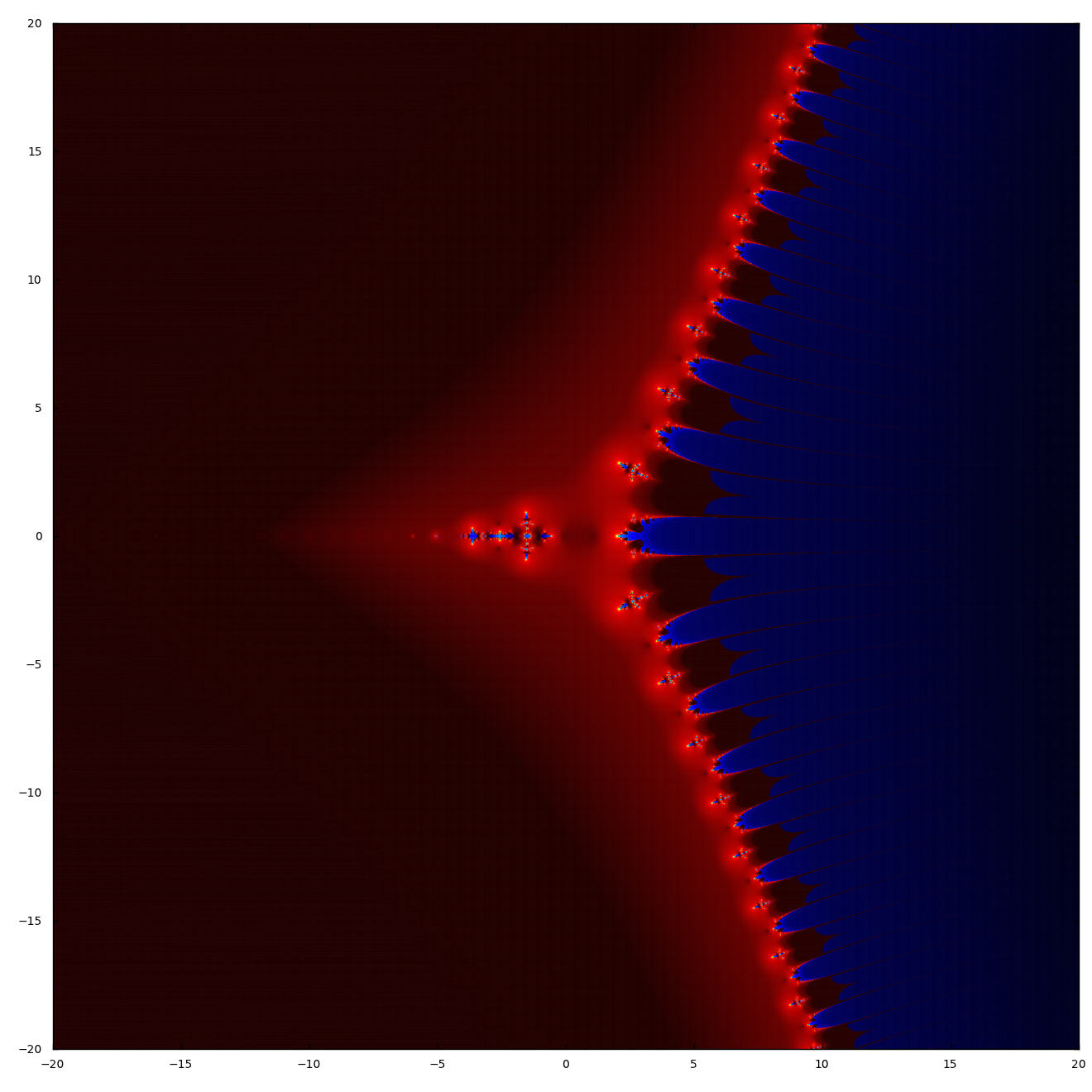
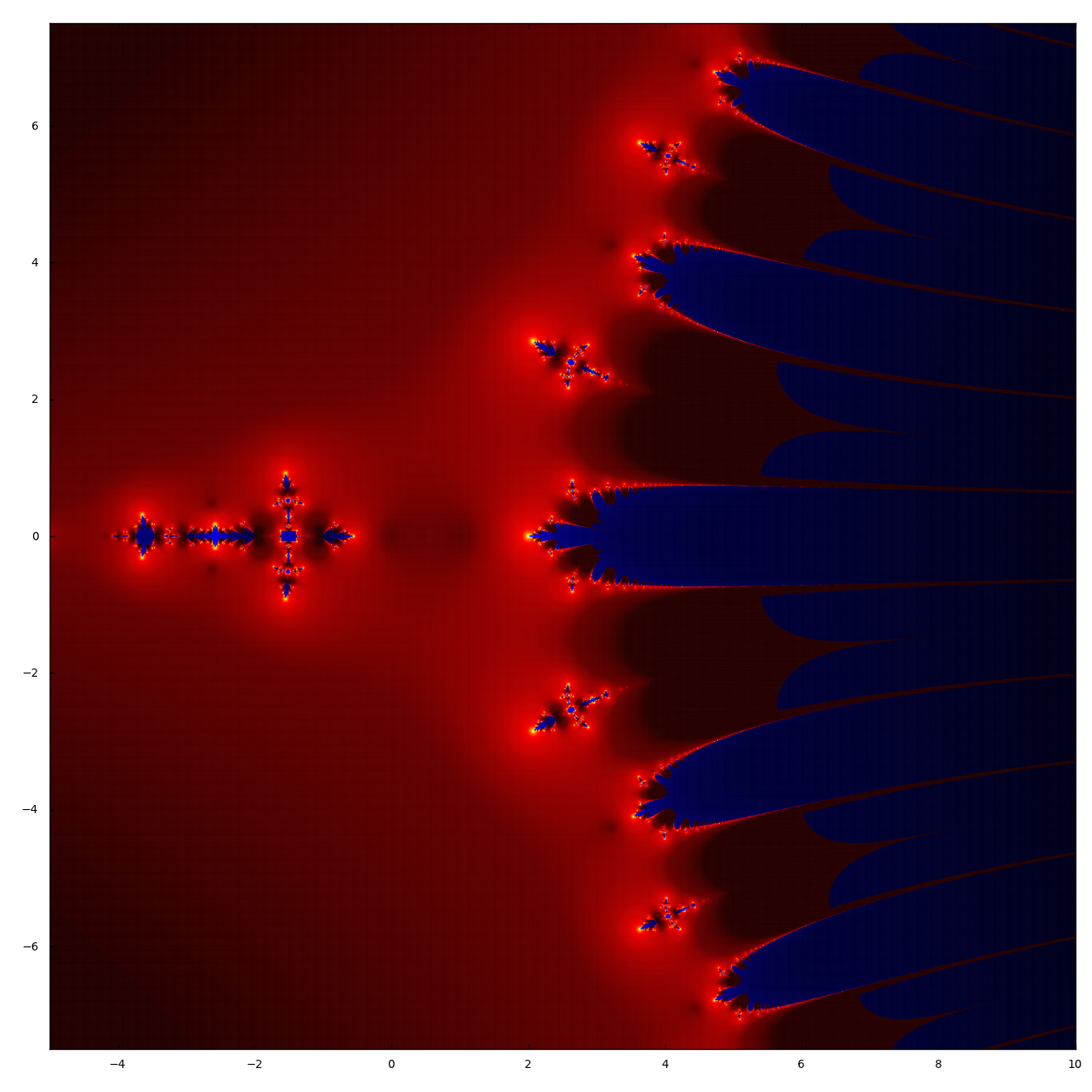
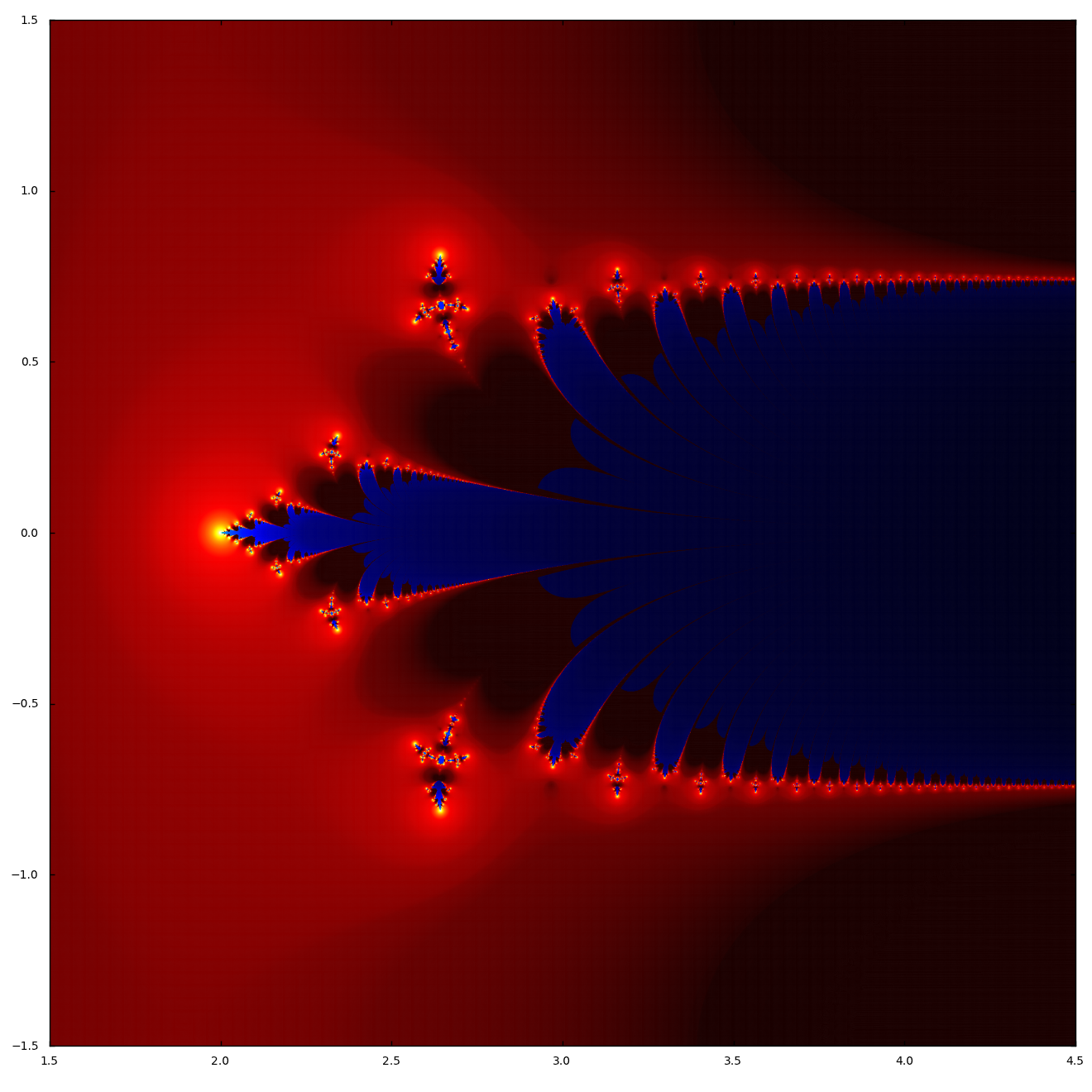
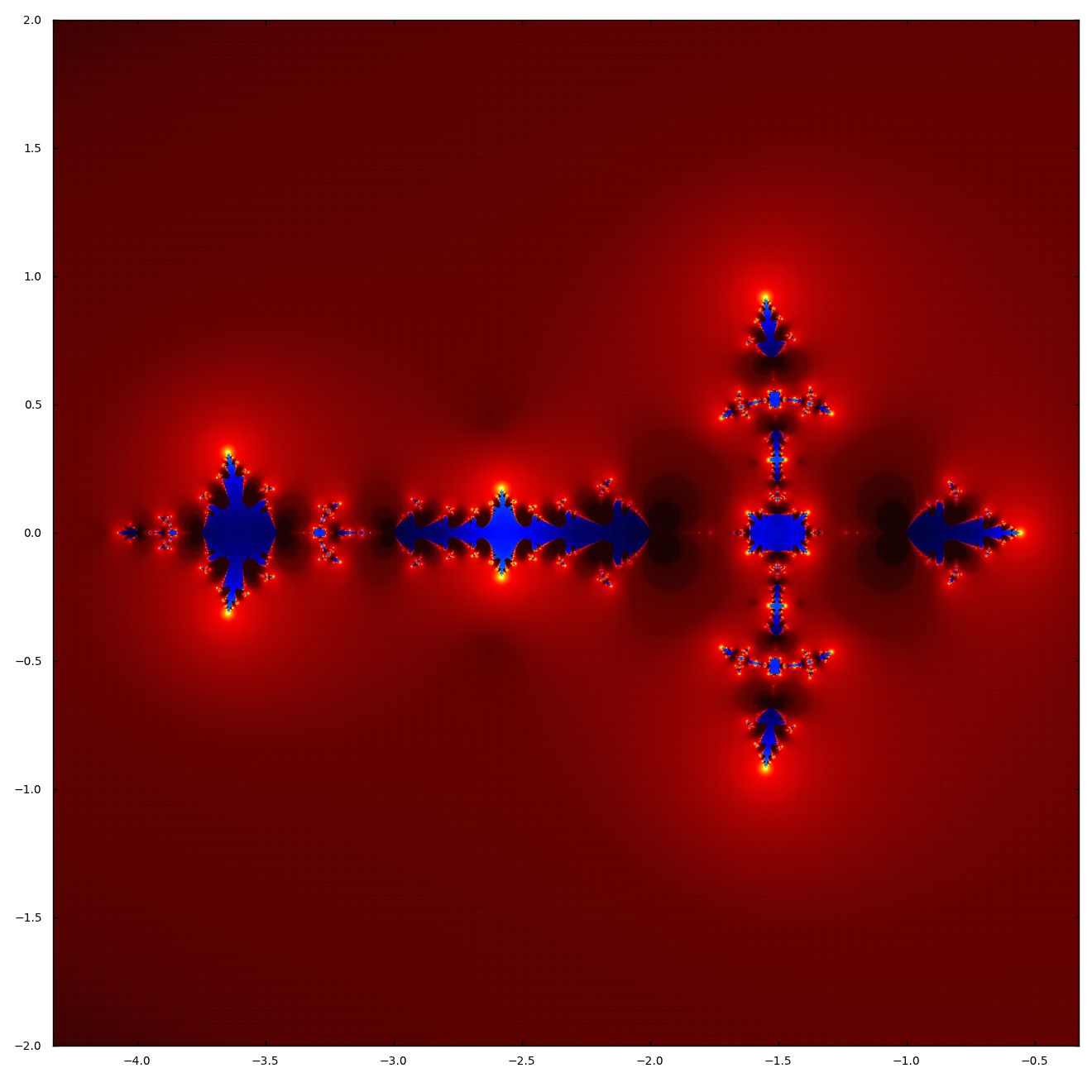
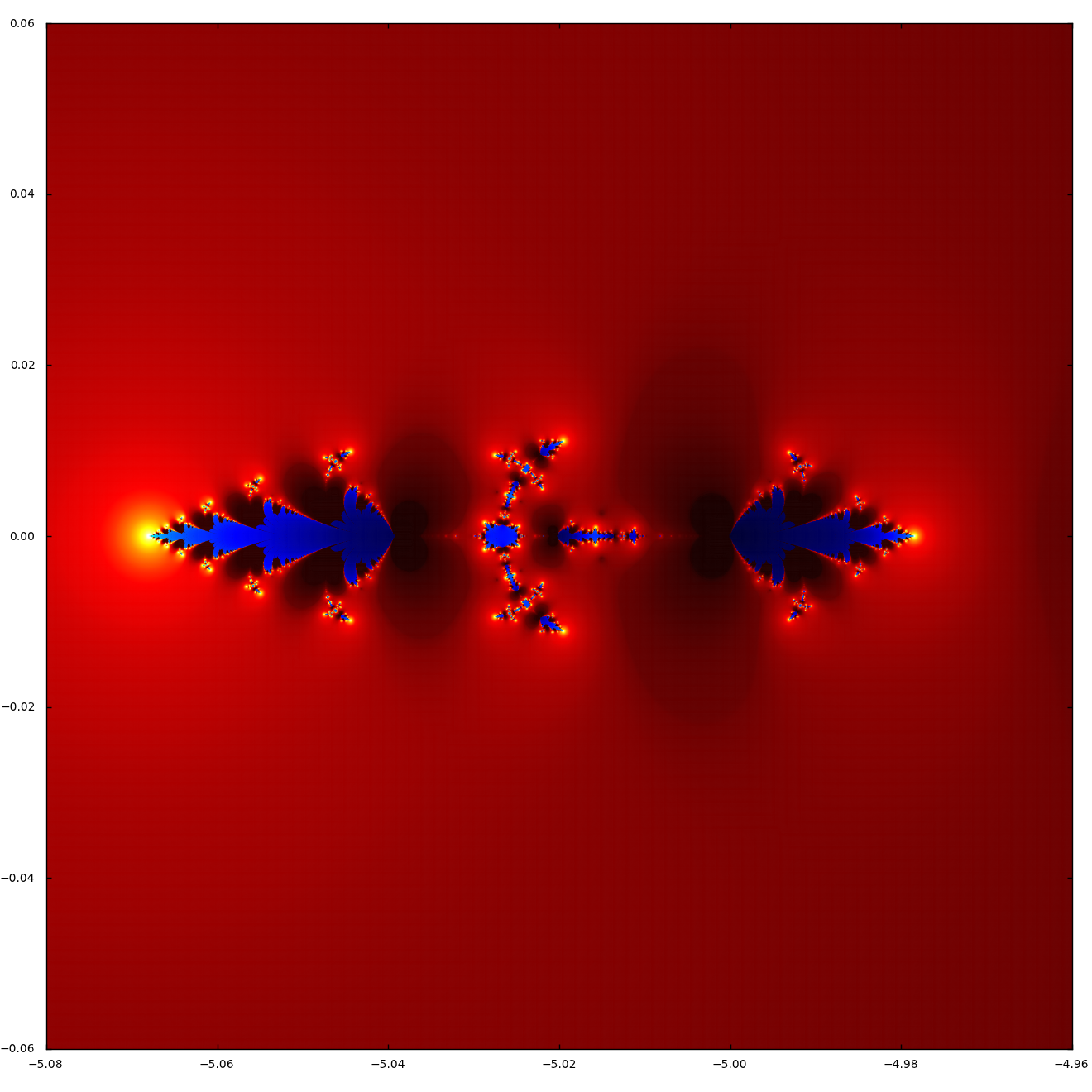
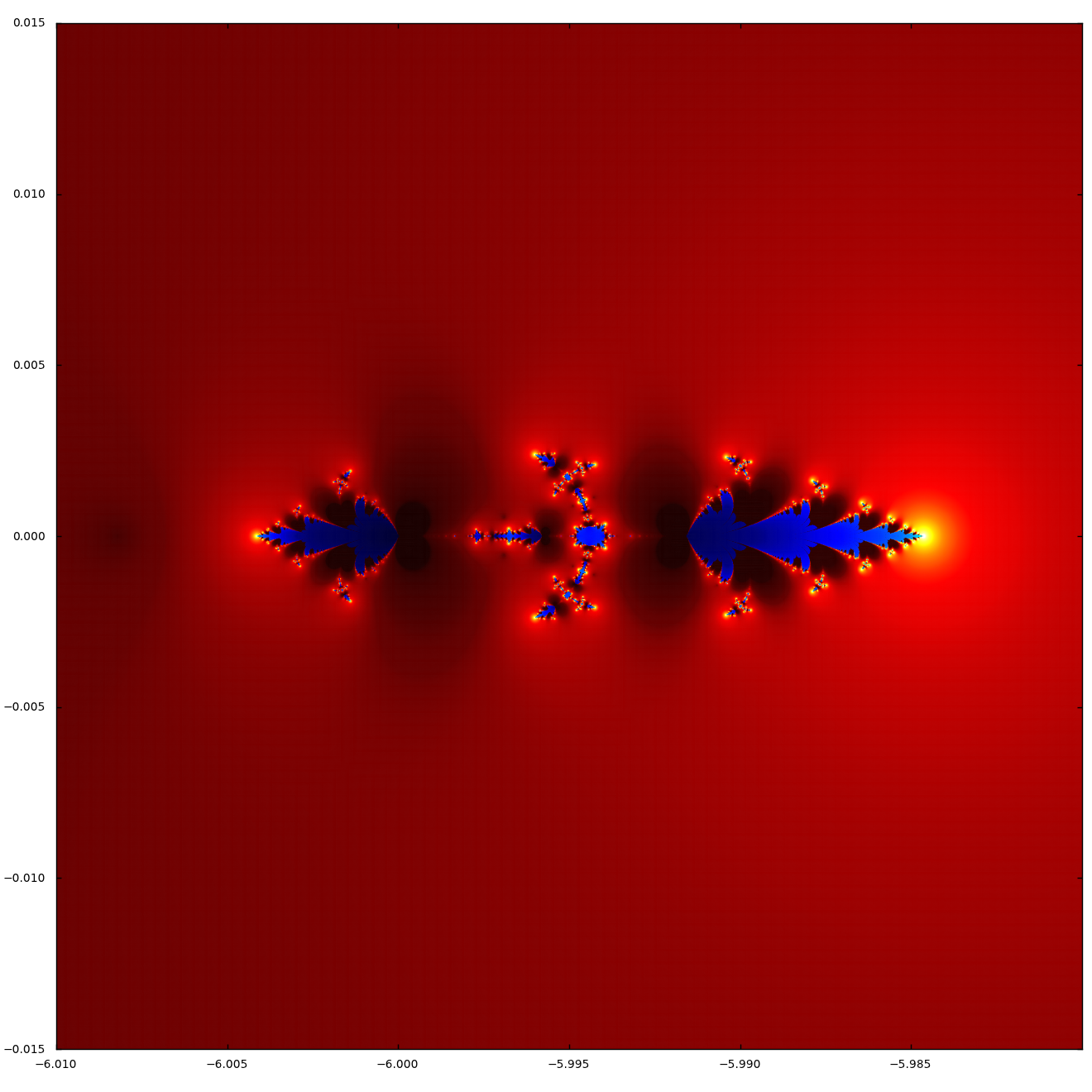
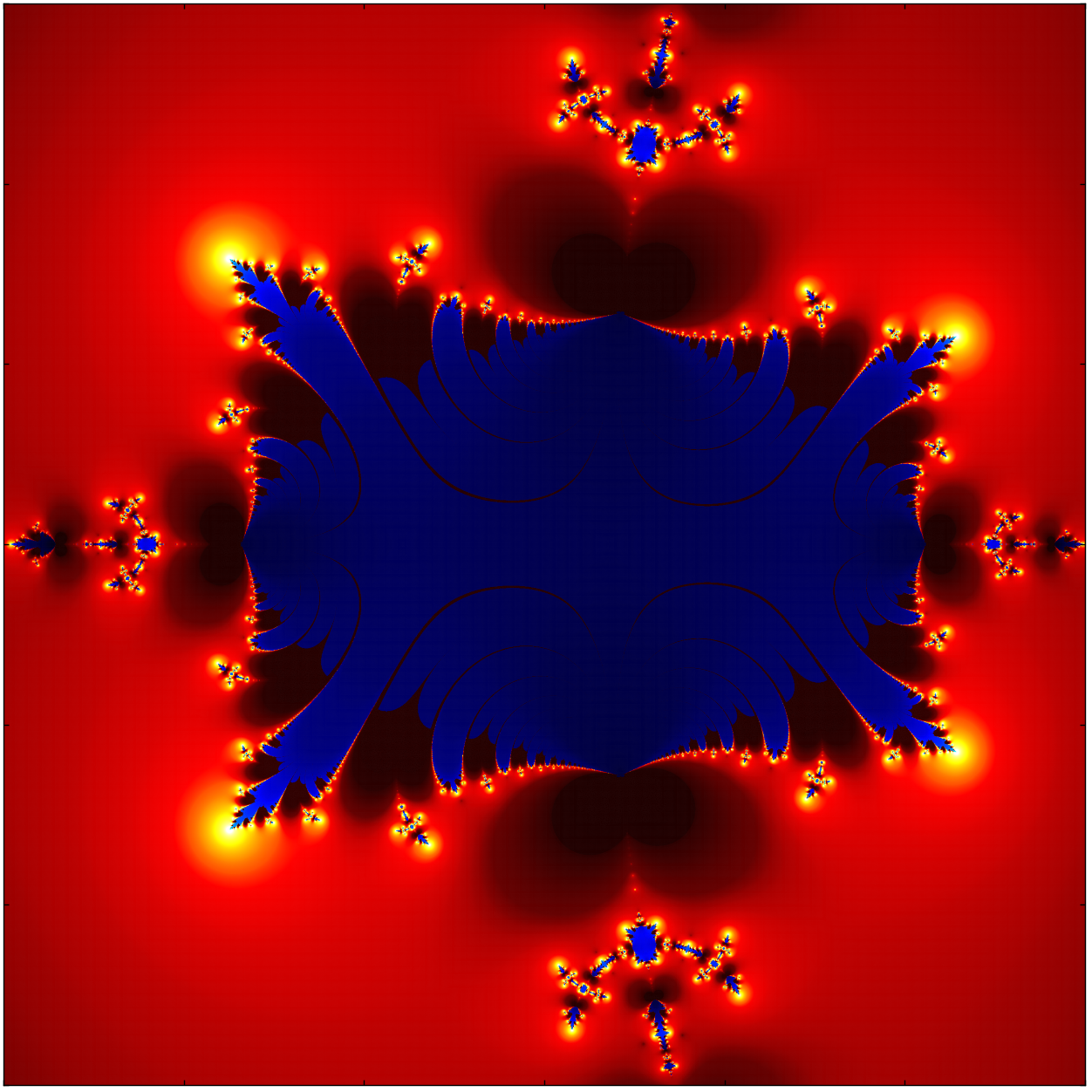
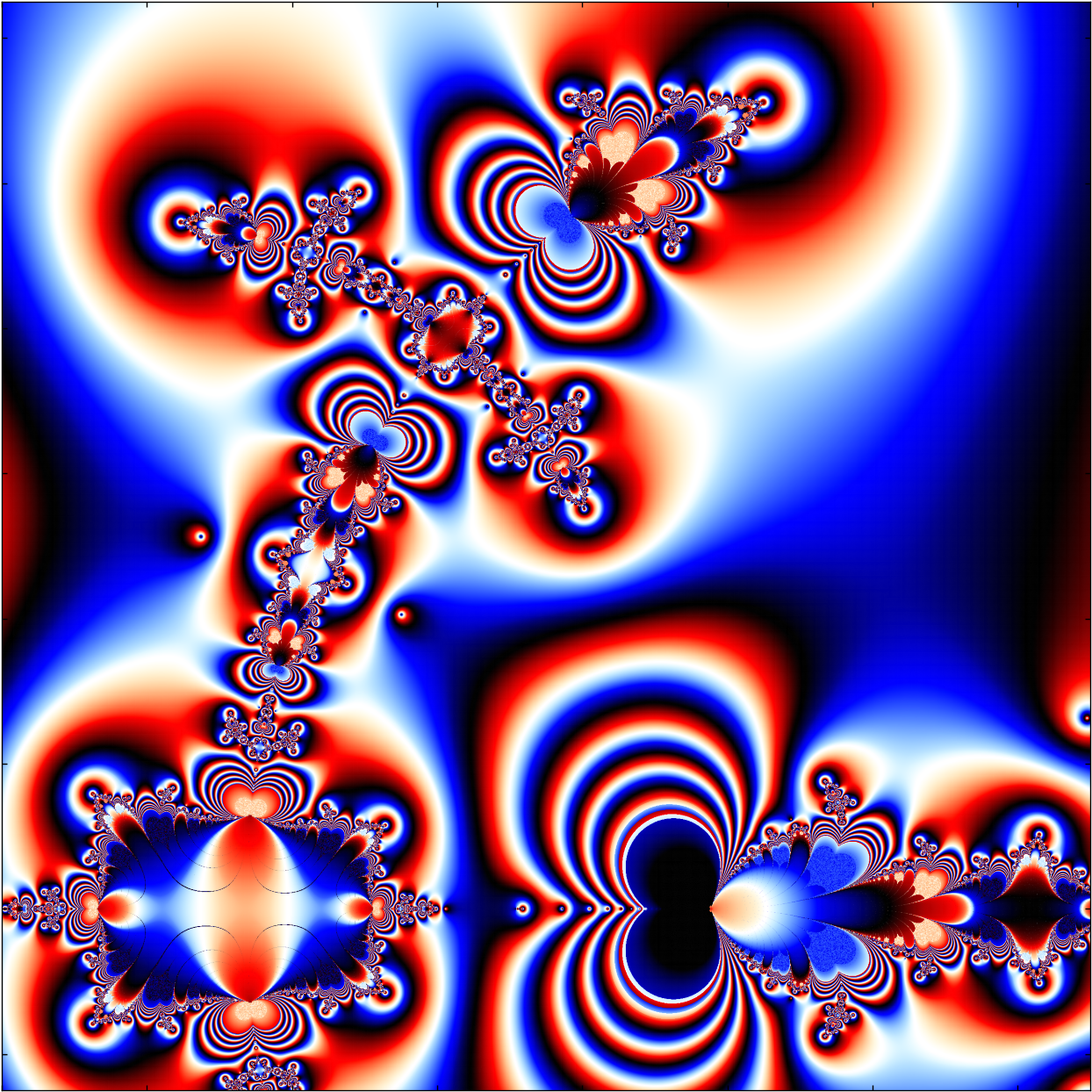
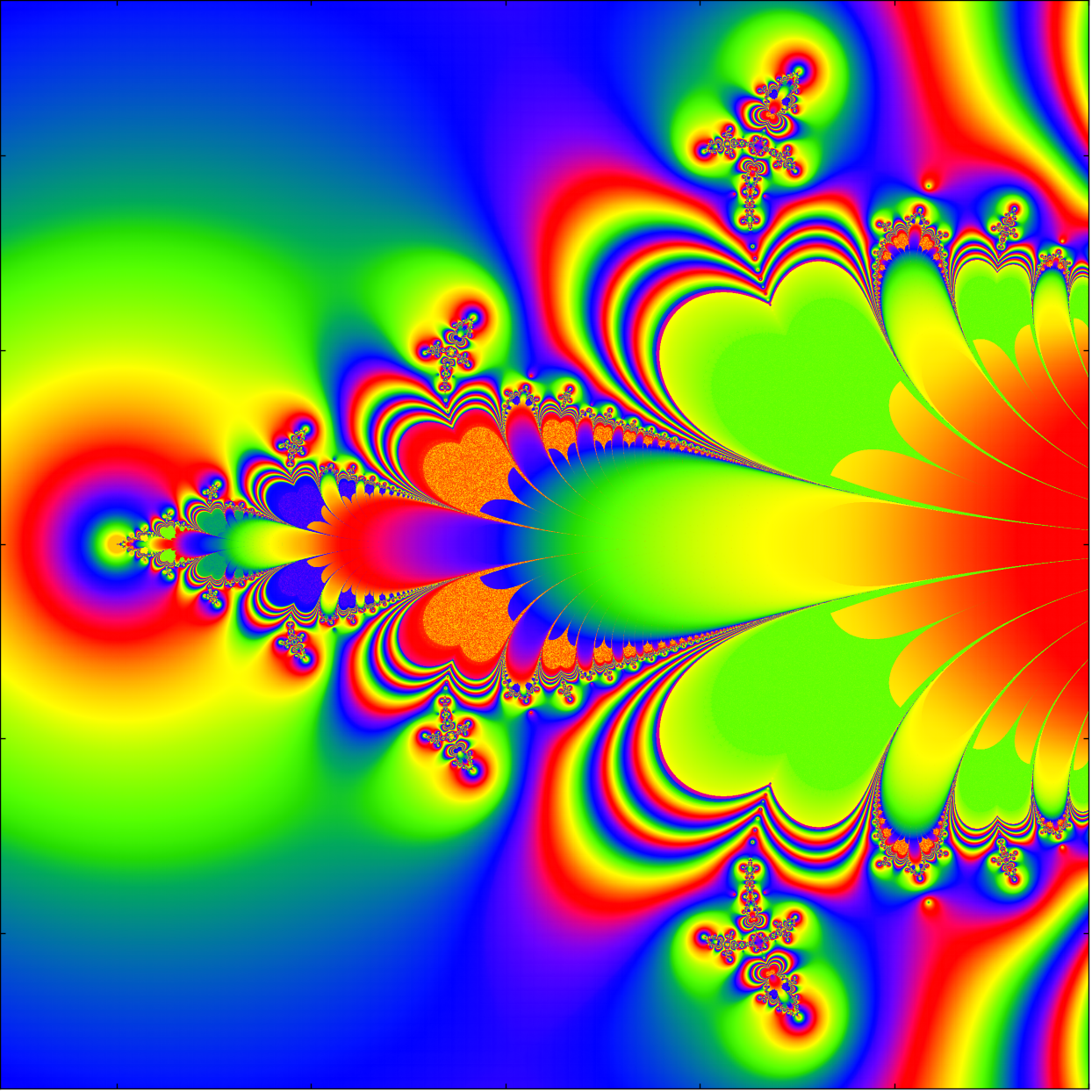
This is amazing! Stop being so unbearably interesting to read, Thomas. Actually no, don’t stop.
These are really beautiful! It’s related to the Julia set of the factorial function, I think. For readers who don’t know what that means, your sets where the sequence of repeated factorials converge vs. diverge are the “prisoner set” and “escape set” described here), with colors to show how quickly and dramatically a point reveals which of the two sets it’s in.
Most of the Julia sets people look at are for quotients of polynomials, but someone may have looked at your fractals before, too. I guessed that the Gamma function might be a more likely example to find somewhere than the factorial function (which is just the shifted Gamma function), just because the Gamma function is the one usually defined on the whole complex plane.
I was curious to see how your fractals would compare to ones generated by the Gamma function. There might be a known relationship between the fractal of a function and the fractal of its translation, but I’m no expert, so I did a visualization. No surprise: The fractal from the Gamma function is also interesting, at least at first glance. I didn’t zoom in. (Is any fractal not?)
A very rough replication of what you did (left) alongside the same visualization for the Gamma function is here: [http://i.imgur.com/f4VLZXc.png. You can see the cross-like feature at the left, though my coloring scheme and other programming shortcuts (or mistakes?) result in different (and in some cases missing) visual features being prominent.
If you google “Gamma function Julia set” you’ll find some pictures by an Anders Sandberg on Flickr. I can’t quickly match his fractal up with yours or mine, but I don’t know what values of z he used or how he colored the points. I’d put a link, but I’ve already included two, and I don’t want this comment to get filtered as spam.
Lovely! Thanks for making these.
My fractals are based on z_[n+1] = Gamma(z_[n] + 1), as is your first one, right. Whereas your second image is based around z_[n+1] = Gamma(z_[n])? There seems to be a lot more “turbulence” in that one. Would be nice to see some animations where you gradually transform from one to the other. Computing burden would be enormous though!
Here is the link to the Sandberg Gamma fractals: http://aleph.se/andart2/math/gamma-function-fractals/. You can see some similar features, certainly.
Hi, these are beautiful images.
I have been doing the same kind of thing but with the Riemann zeta function.
See the resultant iteration fractals here:
http://primepatterns.tumblr.com/tagged/Riemann-zeta-function/chrono
I started out with a random colour scheme but ended-up with a heatmap.
Have you rendered any of your Gamma function images with a heatmap colour scheme? I’d be interested to see how they turn out.
Your work is incredibly thorough. Very impressive. I was just playing around really.
Pretty much every fractal image I made is up on the page and I don’t have time to look at these in any more depth at the minute.
My blue red colour-scheme is effectively a heat map, though. The blue/black corresponds to your bright blue regions, while the yellow/red corresponds to your yellow. I have additionally smoothed the colours by considering the final distance from the attracting fixed point before the numbers became too large, or before I reached my iteration limit.